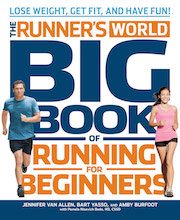
When Andrea “Andi” Ball first started working out, at 257 pounds, her workouts were almost always dissatisfying. “I’d get frustrated because I’d get out of breath so quickly,” she says.
Indeed, Ball discovered what runners of all levels of experience end up learning the hard way: When you’re trying to boost calorie burn, it can be easy to overdo it and burn out instead. “Once I slowed the pace,” says Ball, “I found that I could run farther, and longer, and I was much more satisfied with how much I was accomplishing.” Here are some tips to help you determine how fast or slow to go.
Start slow No matter how far or how long you plan to go, start out slowly to warm up and gradually raise your heart rate. That will make the workout feel easier sooner. You want to go into the workout with the idea that you’ll finish strong. If you finish feeling gassed, you’re going to be demoralized and it’s going to be that much more difficult to get out for your next workout. One of the most common mistakes newer runners make is going out too fast.
Walk briskly If you’re walking, your cadence should feel quick. You should be able to hold a conversation. If you can sing, you’re likely going too slow, but if you are huffing and puffing, you’re going too fast.
Run relaxed When you first start out, it’s common to clench up muscles that aren’t involved in running. And that can sap the strength you need for a good workout. So when the going gets tough, do a body scan: Unknit your brow, unclench your jaw, keep your hands relaxed (imagine holding a piece of paper between your thumb and pointer finger), and breathe. You’ll be amazed at how much easier the workout feels!
Measure minutes, not miles Don’t worry about your pace or miles covered when you’re just starting out. The first step is to focus on building overall fitness–and to make exercise a habit. The biggest health improvements (lower risk of cardiovascular disease, diabetes, and hypertension) result from the time you consistently spend elevating your heart rate. It doesn’t matter how many miles you cover while you’re out.
Tune in to your body Once you hit a pace that feels comfortable, tune in to how your body feels. How hard are you breathing? How quickly are your legs turning over? How do your leg muscles feel? Getting a sense of how your comfortable pace feels will help you lock in to it on every run.
What’s your go-to running speed? How do you decide when to pick up the pace? Share in the comments!
 Reprinted from The Runner’s World Big Book of Running for Beginners by Jennifer Van Allen, Bart Yasso, and Amby Burfoot with Pamela Nisevich Bede, RD, CSSD. ©2014 by Rodale Inc. By permission of Rodale Books. Available wherever books are sold.
Reprinted from The Runner’s World Big Book of Running for Beginners by Jennifer Van Allen, Bart Yasso, and Amby Burfoot with Pamela Nisevich Bede, RD, CSSD. ©2014 by Rodale Inc. By permission of Rodale Books. Available wherever books are sold.
The Runner’s World Big Book of Running for Beginners provides all the information newbies need to take their first steps, as well as inspiration for staying motivated. The book presents readers with tips for smart nutrition and injury prevention and includes realistic training plans that enable beginning runners to achieve gradual progress (by gearing up for a 30-minute run, a 5-K, or even a 5-miler).

